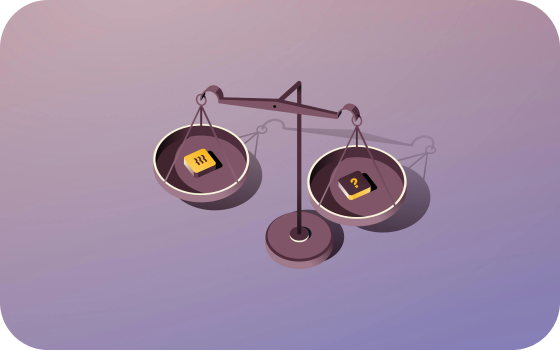The Canada Pension Plan (CPP) is a retirement program run by the Government of Canada, designed to provide financial support to Canadian workers and their families through plan benefits such as retirement pensions, disability benefits, and survivor benefits.
Both employers and employees contribute to the CPP, which is based on a percentage of the employee's earnings up to a certain limit known as the earnings ceiling or the year's maximum pensionable earnings.
The amount paid is based on the employee's earnings up to a limit known as self-employed individuals must pay both the employer and employee portions. These CPP contributions are then used to fund different benefits that help Canadians during retirement or if they experience a disability.
Why is CPP important?
Employers must understand the CPP to manage payroll and ensure the correct amount is deducted from employees' wages. This keeps businesses compliant with Canadian laws, as employers are required to match their employees' contributions.
For employees, the CPP offers financial security during retirement and provides additional support through programs like the CPP disability benefits and the CPP death benefit. It is a key part of their overall retirement income, alongside private savings and other pensions like old age security.
CPP benefits, including retirement pensions and disability pensions, are considered taxable income. Recipients must declare their CPP payments on their annual tax returns.
Key benefits of the Canada Pension Plan (CPP)
The CPP provides several important benefits to Canadians. Here’s an overview of the main benefits:
1. Retirement pension
The CPP retirement pension is a monthly benefit for individuals who have contributed to the plan. The maximum amount you can receive depends on your contributions and the number of years you contributed. You can begin receiving benefits as early as age 60, but if you delay until 70, your pension increases.
2. Disability benefits
A CPP disability pension is available to people who cannot work due to a severe and prolonged disability. To qualify, you must have contributed to the CPP for a certain number of calendar years and meet the disability requirements. The payment is based on your contributions and the severity of your condition.
3. Survivor’s pension and death benefits
The survivor's pension is paid to a spouse or common-law partner of a deceased contributor, and a death benefit is a one-time payment made to the estate to help cover expenses like funerals.
4. Children’s benefits
Children of a deceased or disabled CPP contributor can receive children’s benefits. The child-rearing provision ensures that time taken off to raise children doesn’t negatively impact the parent’s pension.
These benefits are available to children under 18 or up to age 25 if they are full-time students. The payment amount is fixed, but eligibility is based on the contributor’s history of contributions.
Each benefit is calculated based on the individual's CPP contributions, including the number of years they contributed and their earnings. Eligibility criteria differ for each benefit, but they all depend on whether the person has contributed sufficiently to the CPP. The benefit amount is determined by the person's contributory period and income over the years.
Beneficiaries can receive payments via direct deposit, a convenient and fast way to access their monthly payments. This ensures the maximum amount is available to the beneficiary with minimal delay.
CPP contributions for employers and employees
The Canada Pension Plan (CPP) requires both employers and employees to contribute a portion of their income to fund future benefits such as retirement pensions, disability benefits, and survivor’s pensions.
How much do employers and employees contribute?
Both employers and employees are responsible for making CPP contributions. Each contributes an equal amount, a percentage of the employee's earnings. Self-employed individuals must pay both the employer and employee portions.
In 2024, the employee contribution rate is 5.95% of an employee’s earnings. Self-employed individuals must contribute the full rate of 11.90%. The rates are expected to rise slightly as part of the CPP enhancement, which aims to improve retirement benefits for future generations.
The amount of CPP contributions is calculated based on an employee’s earnings up to the year’s maximum pensionable earnings (YMPE). In 2024, the YMPE is $66,600. Employees only contribute on earnings between $3,500 and the YMPE. Any earnings above that limit are not subject to CPP contributions. To calculate contributions, multiply the contribution rate by the employee’s income up to the YMPE.
Employers must accurately calculate and deduct CPP contributions. Incorrect deductions can lead to penalties, and employees may miss out on future benefits if their contributions are not recorded correctly.
Employers must ensure that contributions are reported and submitted to the Canada Revenue Agency (CRA) on time, using the employee's social insurance number (SIN) for tracking.
How to enroll employees in the Canada Pension Plan?
Employers in Canada must ensure their employees are enrolled in the Canada Pension Plan (CPP) once they start earning a salary.
Here's how to manage the enrollment and contribution process:
1. Verify employee information
Before starting CPP contributions, ensure that each employee has a valid social insurance number (SIN) and is eligible to contribute to the CPP. Any employee aged 18 and over must be enrolled in the CPP if they earn more than the basic exemption of $3,500 per year.
2. Start making CPP deductions
Once an employee starts earning a salary, employers must begin making CPP deductions from their earnings. These deductions are calculated as a percentage of the employee’s income up to the year’s maximum pensionable earnings (YMPE), which is $68,500 in 2024.
Both the employee and employer contribute 5.95% of the employee’s earnings. To calculate the contribution, deduct 5.95% of the employee's earnings and match that amount with the employer.
For example, if an employee earns $50,000 a year, the employee and employer will contribute about $2,975 each toward the CPP. Contributions should begin with the first paycheck once the employee's salary exceeds $3,500.
3. Report contributions to the Canada Revenue Agency (CRA)
Employers must report CPP contributions to the Canada Revenue Agency (CRA) along with income tax and employment insurance (EI) deductions. Ensure that you submit accurate contributions to avoid penalties and ensure the employee’s future retirement pension, disability benefits, and survivor benefits are calculated correctly.
4. Guidelines for self-employed individuals
Self-employed individuals are responsible for contributing both the employer and employee portions to the CPP, which totals 11.90% of their net business income, up to the maximum earnings limit of $68,500. Self-employed individuals must calculate and remit their CPP contributions when filing their income tax returns.
5. Use payroll software
Many employers use payroll software to calculate and deduct CPP contributions automatically. This helps to ensure accurate deductions and reduces the risk of errors in employee payroll.
CPP retirement pension
The Canada Pension Plan (CPP) retirement pension provides monthly payments to Canadians who have made sufficient contributions throughout their working life.
Here's a breakdown of the key aspects of the CPP retirement pension:
Eligibility
- You can start receiving your CPP retirement pension as early as age 60. However, the standard age at which CPP begins is 65.
- If you choose to delay receiving benefits, you can wait until age 70 to start your pension. The age at which you start affects how much you receive each month.
Calculation of CPP retirement pension
The amount you receive from CPP depends on how much you contributed and for how long.
CPP contributions are made by both employees and employers (or by the individual if self-employed) based on earnings between $3,500 and the year's maximum pensionable earnings (YMPE). The more years you contribute and the higher your earnings, the larger your monthly pension will be.
The CPP retirement pension is calculated as a percentage of your average earnings during your best contributing years. This percentage can be as high as 25% of your average yearly earnings. For example, if your average annual earnings over your career were $60,000, your CPP could be around $15,000 annually if you wait until age 65.
Impact of early or late retirement
- Early retirement (age 60 to 64): If you take your CPP retirement pension early (as early as 60), your benefits will be reduced by 0.6% each month before your 65th birthday. If you start CPP at age 60, you could receive 36% less per month than if you had waited until age 65.
- Late retirement (age 65 to 70): If you delay taking your CPP until after 65, your benefits will increase by 0.7% for each month you delay up to 70. This results in an increase of 42% if you wait until age 70 to start receiving your CPP retirement pension.
What are CPP disability benefits?
CPP disability benefits are provided to employees in Canada who can no longer work due to a severe and prolonged disability. These benefits aim to offer financial support when individuals cannot continue working and contribute to the Canada Pension Plan (CPP) due to their health condition.
To qualify for CPP disability benefits, applicants must meet the following requirements:
- They must have contributed to the CPP for at least four of the last six calendar years or at least 25 years, with three being in the last six years.
- The disability must be both severe and prolonged. Severe means the individual cannot work any job, while prolonged means the disability is expected to be long-term or permanent.
The amount of CPP disability benefits depends on the individual’s contribution history. It includes a fixed base amount plus a percentage of what the individual’s CPP retirement pension would be. As of 2023, the average monthly payment is about $1,064 but can vary based on contributions. Dependent children of the disabled person may also qualify for a children’s benefit, which provides additional financial support.
Survivor’s Pension and Death Benefits
CPP survivor’s Pension and CPP death benefit provides financial assistance to the family of a deceased contributor under the Canada Pension Plan (CPP).
Survivor’s pension
The CPP survivor’s pension is a monthly payment to a deceased CPP contributor's surviving spouse or common-law partner. The amount of the survivor’s pension depends on the deceased’s contribution history and the age of the surviving partner.
- If the survivor is under age 65, they will receive a flat-rate portion plus 37.5% of the deceased’s CPP retirement pension.
- If the survivor is 65 or older, they receive 60% of the deceased’s CPP retirement pension.
The survivor must apply for the benefit, and eligibility is determined by the deceased’s contribution history to the CPP.
CPP death benefit
The CPP death benefit is a one-time payment made to the estate of the deceased CPP contributor. This benefit helps cover funeral costs or other expenses related to the death. The maximum CPP death benefit is $2,500, but the actual amount depends on how much the deceased contributed to the CPP over their working life.
Children’s benefits under CPP
The CPP children’s benefits provide financial support to the dependent children of a deceased or disabled CPP contributor. These benefits aim to help children who are financially dependent on a parent who can no longer work due to a disability or has passed away.
To be eligible for CPP children’s benefits, the child must be:
- Under 18 years old; or
- Between 18 and 25 years old and attending school full-time.
The child must also be the dependent of a parent who is either receiving CPP disability benefits or has passed away after making sufficient CPP contributions.
The CPP children’s benefit is a fixed monthly payment. As of 2023, it was around $264.53, but this amount is adjusted periodically. The benefit is paid to each eligible child, providing important financial support during loss or disability.
These benefits help ensure that dependent children of CPP contributors have financial assistance while still in school or under parental care.
CPP vs. other retirement plans
The Canada Pension Plan (CPP) is a key component of retirement income in Canada, but it works alongside other retirement savings programs like the Registered Retirement Savings Plan (RRSP) and Old Age Security (OAS).
The Quebec Pension Plan (QPP) is the equivalent of the CPP in Quebec but with slight differences in administration and contribution requirements. It also offers pension sharing and other benefits similar to the CPP.
Each of these plans serves a different purpose, and together, they can provide a comprehensive retirement plan for employees.
What is a Registered Retirement Savings Plan (RRSP)?
An RRSP is a private, voluntary retirement savings account where individuals can contribute up to a certain limit each year. Contributions to an RRSP are tax-deductible, meaning you won't pay tax on the money until you withdraw it, usually during retirement.
Unlike CPP, which is a government program, RRSPs are self-managed, and individuals can choose their investment options, such as stocks, bonds, or mutual funds.
What is Old Age Security (OAS)?
OAS is another government-run program, but it is different from CPP. OAS provides a basic monthly pension to seniors starting at age 65, regardless of their employment history, as long as they have lived in Canada for at least 10 years after turning 18.
OAS is funded through general tax revenue, not contributions like CPP. There is no connection between OAS payments and how much a person earned or contributed during their working years. Higher-income retirees may see a reduction in their OAS payments due to the OAS Clawback.
Frequently Asked Questions on CPP
How are CPP benefits calculated?
Your CPP retirement pension is based on several factors, including how much you contributed, for how long, and your average earnings over your working life. For 2024, the maximum monthly pension at age 65 is $1,364.60 (maximum amount), but most people receive less than this amount, depending on their work and contribution history. You can estimate your monthly CPP payment by logging into your My Service Canada Account.
How does CPP fit into a comprehensive retirement plan?
For most employees, the CPP forms a stable foundation of retirement income, providing predictable, inflation-adjusted payments. However, the CPP retirement pension alone may not be enough to cover all retirement expenses, which is why it's often combined with other retirement savings plans like an RRSP or workplace pension plans. Together, these programs help ensure a stable and comfortable retirement by diversifying income sources.
Rippling and its affiliates do not provide tax, legal, or accounting advice. This material has been prepared for informational purposes only, and is not intended to provide, and should not be relied on for, tax, legal, or accounting advice. You should consult your own tax, legal, and accounting advisors before engaging in any related activities or transactions.












































































